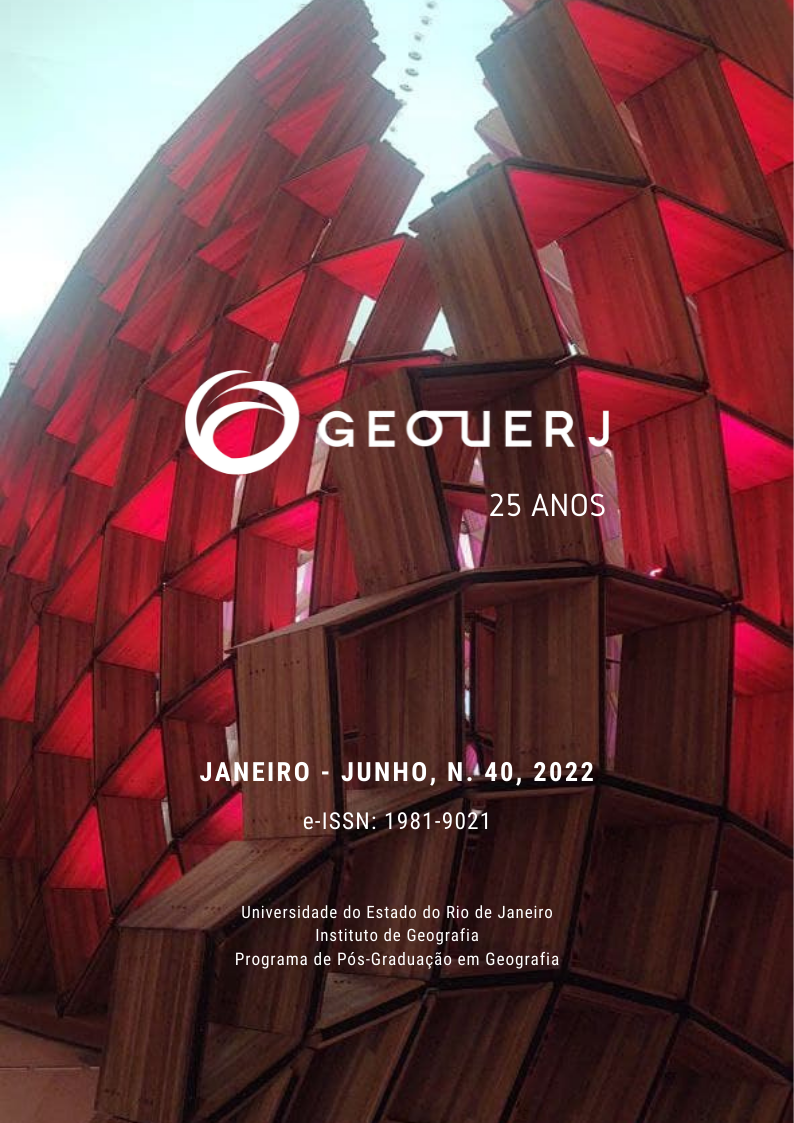CURIAÚ RIVER ENVIRONMENTAL PROTECTION AREA IN MACAPÁ/AP: RESISTANCE TERRITORIES AND THE LEGALIZATION OF AREAS
DOI:
https://doi.org/10.12957/geouerj.2022.64988Keywords:
Quilombo. Territoriality. Protected areas. Amapá. Legislation.Abstract
The legal protection of areas is the main instrument of environmental and cultural preservation and conservation in Brazil. In this sense, communities with black ancestry linked to the Curiaú River Environmental Protection Area and, consequently, to the Curiaú River hydrographic basin in the municipality of Macapá, state of Amapá, seek legal norms to protect their environment and culture, that is, its territory. These communities have as their main purpose the ratification of their territories. However, the process is slow and with a high degree of difficulty, causing despair to the community. Objective: This study aimed to analyze the titling processes of the remaining quilombo communities that are linked to the Curiaú River Environmental Protection Area and how the communities have been resisting the pressure promoted by urban expansion and the development of soy farming. Methodology: It consisted of documentary, theoretical, legislative and field research, with on-site observation. Results: The results show that the main instruments used by the remaining quilombo communities to protect their territories are the legal norms with which they try to legalize their territories through titling.Downloads
Download data is not yet available.
Downloads
Published
2022-07-19
How to Cite
BRITO, Daguinete Maria Chaves; BASTOS, Ananda Brito; BASTOS, Cecília Maria Chaves Brito. CURIAÚ RIVER ENVIRONMENTAL PROTECTION AREA IN MACAPÁ/AP: RESISTANCE TERRITORIES AND THE LEGALIZATION OF AREAS. Geo UERJ, Rio de Janeiro, n. 40, p. e64988, 2022. DOI: 10.12957/geouerj.2022.64988. Disponível em: https://www.e-publicacoes.uerj.br/geouerj/article/view/64988. Acesso em: 3 jul. 2025.
Issue
Section
Dossiê
License
The copyright of articles published in Geo UERJ belongs to their respective authors with rights to first publication conceded to the journal. Every time that the article is cited and reproduced in institutional repositories or personal and professional web pages the link to the journal web page must be provided Geo UERJ.

The articles are simultaneously licensed under theCreative Commons Atribuição-Não Comercial-Compartilha Igual 4.0 Internacional.


